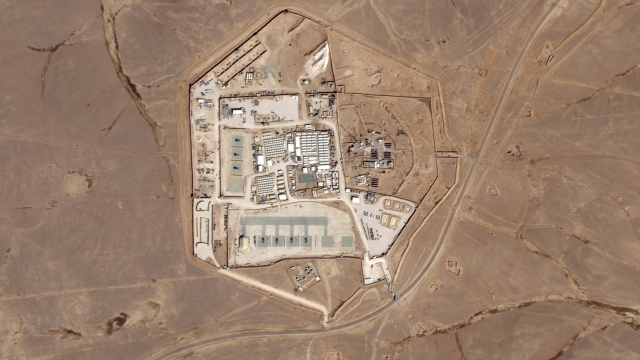A drone attack on a U.S. military base in Jordan has put paramilitary groups in the region backed by Iran back in the spotlight.
This is after months of probing attacks by these groups against different U.S. bases in Iraq, Syria and Jordan.
The Islamic Resistance in Iraq — an umbrella group made up of various Iran-backed paramilitary groups operating in Iraq — has released more than 40 videos since the start of the Israel-Hamas war, showing attempted attacks against U.S. bases in the region.
The vast majority of these videos show the armed groups launching drones from various locations, mostly at night to more easily avoid detection.
While the Pentagon says it's still investigating, these are believed to be the same kinds of drones used in this most recent attack, which left three U.S. soldiers dead and many more wounded.
The Islamic Resistance took credit for multiple attacks on U.S. bases in Iraq, Syria and Jordan the same day as the deadly Jordan attack — including what they called Al-Rukban Base, another name for the U.S. base in Jordan.
The Islamic Resistance in Iraq is not the only group in the region that's backed by Iran and has shown hostility to U.S. forces, however.
A recent analysis from the Council on Foreign Relations put the number of notable Iran-backed groups in the region at 12, with the majority of them being in Syria and Iraq — countries where the U.S. has a large military footprint.
Those in Iraq include forces like Kataib Hezbollah, a paramilitary force also closely aligned with Iran.
SEE MORE: Iran threatens to respond to any US strikes following Jordan attack
While this group has not publicly claimed any attacks against the U.S. since the Israel-Hamas war started, an analysis from The Washington Institute for Near East Policy said it's highly likely the group is operating under the Islamic Resistance in Iraq umbrella.
When a U.S. strike killed a fighter affiliated with the Islamic Resistance in Iraq in November, he was identified as both being part of Kataib Hezbollah as well as part of the Islamic Resistance in Iraq.
Deputy Pentagon Press Secretary Sabrina Singh said during a press briefing that it's this same group that the U.S. suspects was responsible for the recent strike in Jordan.
"In terms of attribution for the attack, we know this is an IRGC-backed militia. It has the footprints of Kataib Hezbollah, but not making a final assessment on that. Our teams here are continuing to do the analysis but we know that Iran is behind it," said Singh.
There are plenty of other Iran-aligned groups in Syria that U.S. forces have to be wary of as well.
Groups in Syria have mostly focused on limited attacks on al-Tanf, a U.S. base in southern Syria meant to support local Syrian opposition forces and deny Iran access to a strategic route to Damascus.
American forces in both al-Tanf as well as at bases in northeastern Syria have recently been targeted by the Islamic Resistance in Iraq group.
While the Pentagon says Sunday's attack on U.S. troops in Jordan is the first attack in that country since the Israel-Hamas War began, the Islamic Resistance in Iraq has made at least three additional claims that they attacked what they say is the U.S. base at Rukban.
So far, Iran has denied having any involvement in the Jordan base attack, saying regional groups do not take orders from Iran.
Trending stories at Scrippsnews.com


